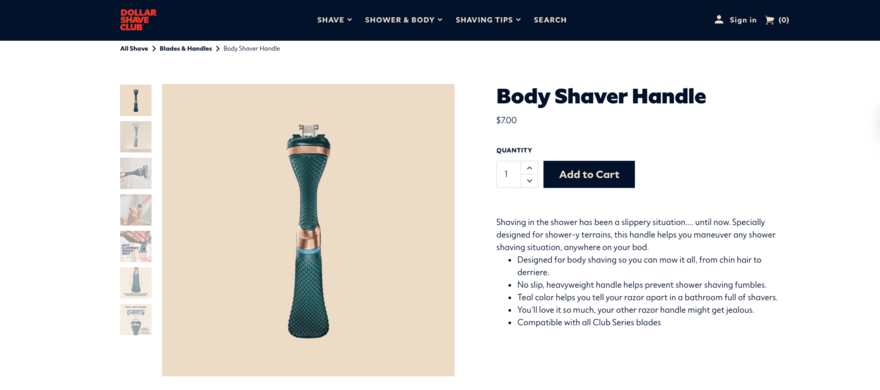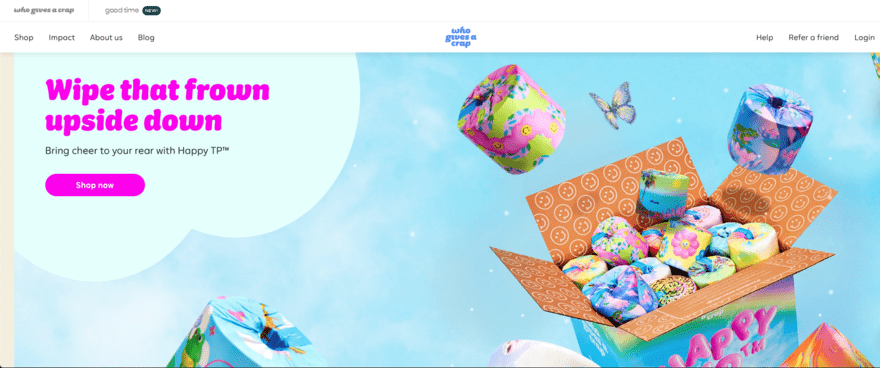Ultimate Guide to Conversion Rate Optimization for Online Stores
Our independent research projects and impartial reviews are funded in part by affiliate commissions, at no extra cost to our readers. Learn more
Sales! All online stores want more of them, right? But there’s a lot that goes into generating a sale for your store. From picking a suitable website builder and selecting the right products, to creating an amazing website and marketing campaigns, and providing excellent customer service, each stage of the sales funnel needs special attention and consideration.
In this article, we’re going to walk you through an often-overlooked, yet essential part of the sales funnel – the conversion. After your customer has been attracted to your store and picked out the best products or services to meet their needs, it’s this final stage that makes the difference between whether you are left with an abandoned cart or money in your pocket.
So, are you ready to turn more website visitors into paying customers? Ready to generate more profits? Ready to optimize your conversion rates?
We thought so! It’s time to dive in…
Understanding Conversion Rate Optimization
Conversion Rate Optimization (often referred to just as CRO) is pretty easy to get your head around. It’s simply the process of optimizing your website design for more conversions.
A conversion can be any valuable action such as signing up for a newsletter, following your brand on social media, or filling out a contact form. However, in ecommerce, making a sale is typically seen as the most valuable conversion.
So:
Conversion = doing something valuable
Optimization = improving your website to drive more conversions
But what about the ‘rate’ part?
This is simply how conversions are measured. The most widely accepted calculation for your conversion rate is:
(Number of conversions / Total number of visitors)* 100 = your conversion rate percentage.
For example, a website that gets 500 visitors a day and makes 10 sales would calculate its conversion rate like this:
(10/500)*100 = 2%
…this means they convert 2% of their visitors into paying customers.
Improving your conversion rate is important for online stores as it’s crucial to ensuring a sustainable revenue model and drives profitability. Focusing on CRO can also help improve user experience and increase customer satisfaction. Ultimately, developing a more robust conversion rate will help you create a better Return On Investment (ROI) from your marketing and sales activity.
You can learn more about the benefits of conversion rate optimization in our dedicated article on why it’s worthwhile.
Key Elements of Conversion Rate Optimization
In this section, we’ll offer some insight into the key areas which can be analyzed, tested, and improved to help boost your conversion rate.
Website Design and User Experience
How your website looks and how users interact with it will have a drastic impact on your conversion rate.
Here are some areas you can focus on:
- Developing a mobile-friendly website with a responsive design
- Creating clear and intuitive navigation to help visitors find their way around the site
- Use consistent branding and high-impact visual elements across the site
- Ensure your website loads quickly
Find Out More
- Learn about Navigation Best Practices to make sure you create an intuitive site
- Check out our report on Website Load Time Statistics to find out why a fast loading site is so important
Compelling and Relevant Content

Your content is how you communicate with your customers. Here are some tips for using content to improve conversion rates:
- Use high-quality product descriptions which focus on benefits rather than features
- Create engaging visuals such as images and videos to engage visitors
- Leverage customer reviews and add testimonials to your site to develop trust
Call-to-Action Optimization

Your call to action is incredibly important when it comes to optimizing your conversion rates. After all, it’s the exact wording you use to ask a visitor to click that all-important button or do that all-important ‘thing’.
Get the most from your CTA by:
- Placing it in a visible part of your website
- Use clear and concise messaging
- Keep wording short and to the point
- Use A/B testing to find a mix of placement/messaging that works best
Discover more tips on how to write a call to action in our full guide.
Streamlined Checkout Process
The easier it is for your customer to check out, the less likely they are to get frustrated and navigate away from your website. Streamline and optimize your checkout process by:
- Using simple and intuitive forms
- Minimizing the number of clicks needed to check out
- Offer a guest checkout option
- Provide multiple payment options
Want to find out more?
Check out our 15 Best Checkout Page Examples for an extra dose of inspiration!
Trust and Security Factors
When someone buys online, they’re trusting the store to keep their details safe and secure. Here are some ways to limit friction and develop trust in your site from your customers:
- Use trust badges and certifications such as an SSL
- Implement a secure payment processing system
- Publish a clear and easy-to-understand privacy and data protection policy
CRO Strategies for Online Stores
So, now you know the various areas of your website that you can optimize for better conversions, it’s time to take a look at some of the specific conversion rate optimization strategies and approaches you can take to help improve these areas.
Data Analysis and Insights
We no longer live in a world where we make business decisions based on a hunch, a feeling, or a coin toss. By moving our businesses online, we can tap into a range of data to help with this.
For example, you may connect your website to an analytical tool such as Google Analytics or use built-in analytical tools that come with your chosen website builder.
These platforms allow us to draw data that can tell us important things such as where in the sales funnel visitors are stopping or which product pages perform the best. By tracking user behavior across your site, you can see which user journeys result in a conversion and which don’t – helping you better understand how to improve performance.
A/B Testing and Experimentation
A/B testing is the process of testing two variations on your website in order to see which one performs best.
For example, you may test two product pages that are identical apart from the CTA wording. By using analytical tools, you can then see which of the two CTA options performs better.
When A/B testing it is important to remember two things:
- Only test one aspect of a page, otherwise, it becomes impossible to tell which aspect has impacted the performance of the page.
- Aim to have similar numbers and types of visitors go to each page to ensure a fair test.
Personalization and Segmentation
With so much noise in the digital world, we like it when a brand or online store is able to create a personalized shopping experience using tailored suggestions and speaking to us directly – it helps us feel valued and understood.
This is why personalization and segmentation is such a powerful tool. This can be applied in various ways including:
- Dynamic content tailored to the visitor viewing
- Automated recommendations based on personal information and past purchases
- Using a CRM to ensure that all customer service reps have access to all relevant information
- Using email and data segmentation to ensure advertisements are relevant
Find Out More
- Discover specific strategies for online stores in our full guide to Ecommerce Conversion Rate Optimization so you can boost your sales.
- Learn about Product Page Optimization specifically, to get more conversions on your product pages.
- Need some concrete proof? Have a look at our Top 5 Conversion Rates Examples you can replicate.
Implementing and Measuring CRO Efforts
In this section, we explore some of the best ways to implement your CRO efforts and how to measure the impact they are having on your business.
CRO Implementation Process
Ready to get started with implementing CRO across your website? Here is a simple process to follow:
- Set your goals and objectives. For example, you may set a goal to increase your conversion rate from 1% to 5% in six months. Follow the SMART structure for setting these objectives.
- Conduct a website CRO audit. This will help you understand exactly where your website currently is. It may also help you identify areas for improvement.
- List optimization areas. Prioritize these based on what you believe will have the biggest impact on the conversion rate.
- Implement your changes and make improvements
Key Performance Indicators for CRO
Once you have followed the implementation process outlined above you’ll want to ensure that you’re tracking the most relevant Key Performance Indicators (KPI) on your site. This will allow you to monitor progress and adjust your processes and tools accordingly.
The primary KPIs used in this area include:
Conversion Rate
We have already discussed what this KPI is and why it is important. To calculate it simply:
(Number of conversions/Number of visitors) * 100
Average Order Value (AOV)
This KPI will highlight how much the average customer spends on each order. To calculate it, use this formula:
(Total revenue / total number of orders) * 100
Bounce Rate and Exit Rate
Your bounce rate reflects the number of visitors that visit your website but leave after viewing only one page. Your exit rate on the other hand tells you exactly how many people have exited your website from a page, even if they visited other pages before that.
These two KPIs help you understand where visitors are leaving your site before making a purchase.
Click-Through Rates (CTR)
Your CTR can relate to any button or hyperlinked text on your website. It is simply calculated by dividing the number of times the link is clicked by the number of page visits.
This can be applied to any conversion which requires a link click and will demonstrate how well that link is performing.
Tools and Resources for CRO
Here are some helpful tools to help you get started:
- Web analytics – Google Analytics and Hotjar
- A/B testing – Optimizely and VWO
- Heatmaps & session recording – Microsoft Clarity
- Customer feedback and survey tools – Survey Monkey and HubSpot
Conversion Rate Optimization: Summary
CRO is absolutely essential for businesses that want to generate a better return on their time and financial investment. Without considering CRO, efforts in web design, marketing, and smart product selection can be wasted.
Even taking time to apply some of the most simple ideas from above can help increase your conversion percentage, having a meaningful and lasting impact on the profitability of your business.
So, what now?
Use the tools and tactics we have outlined in this guide to help you develop a comprehensive and proactive strategy for improving your website CRO. Then measure your key metrics to identify areas for continuous improvement. We also recommend following our conversion rate optimization checklist to help track your progress. Good luck!
Leave a comment